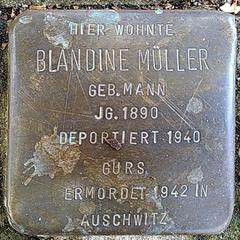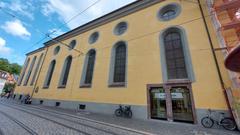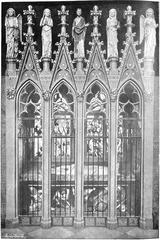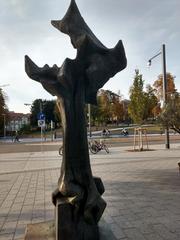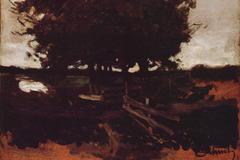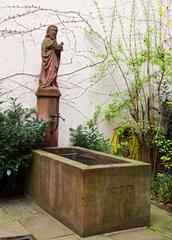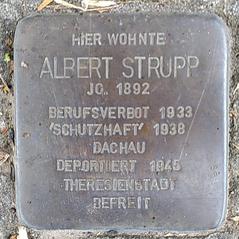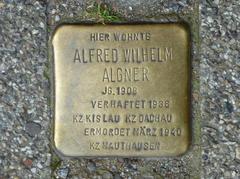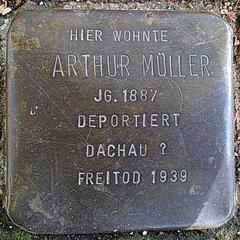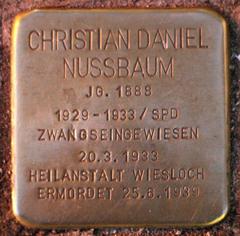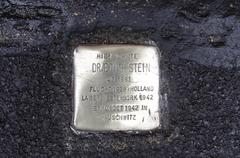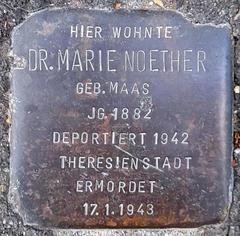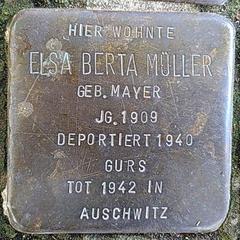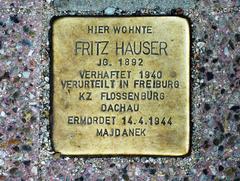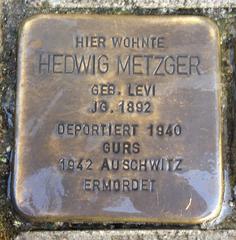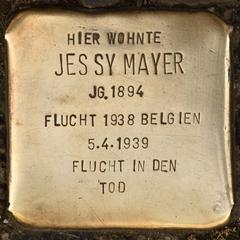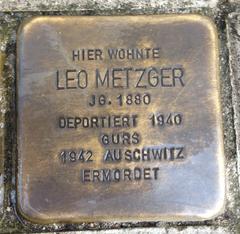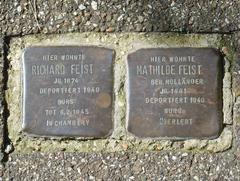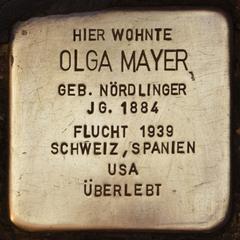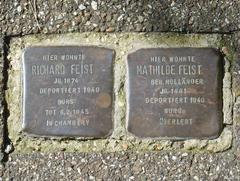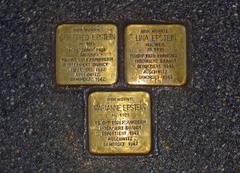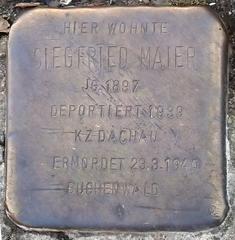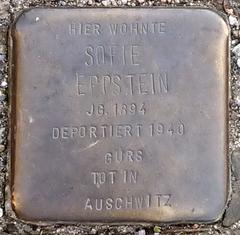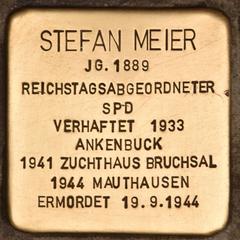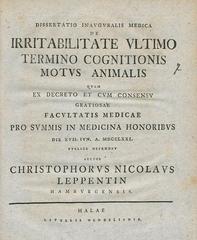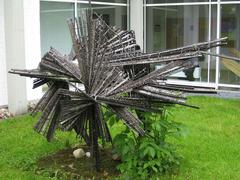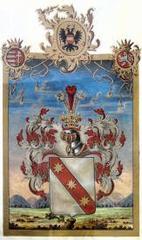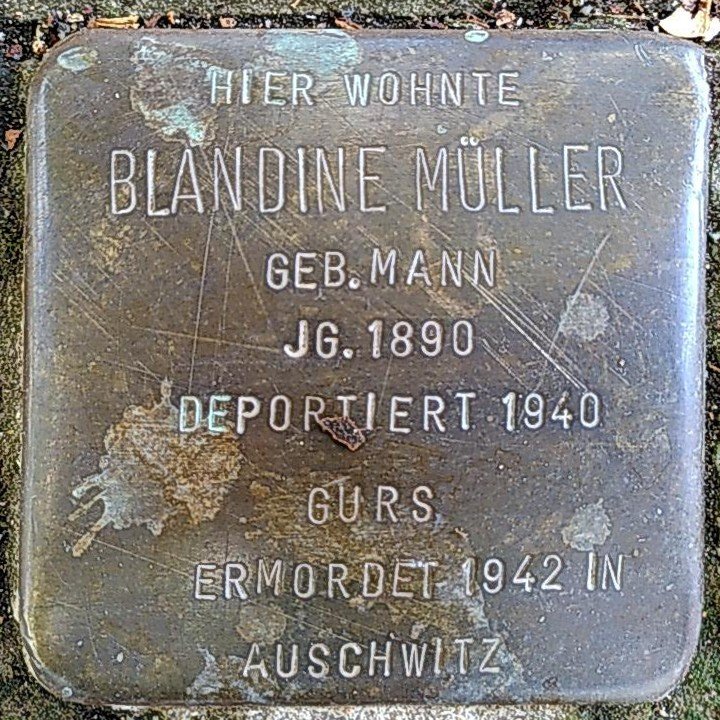
Stolperstein Visiting Guide: Blandine Müller, Freiburg – Historical Context & Visitor Information
Date: 14/06/2025
Introduction
The Stolpersteine (“stumbling stones”) project in Freiburg im Breisgau offers a deeply personal encounter with Holocaust remembrance. These brass-plated concrete cubes, embedded in sidewalks at the last freely chosen residences of Nazi victims, form the world’s largest decentralized memorial. Among the hundreds of Stolpersteine in Freiburg, the stone for Blandine Müller at Elsässer Straße 35a stands as a poignant tribute to an individual life lost to Nazi persecution.
This guide provides historical background, practical visiting information, accessibility tips, and recommendations for exploring related sites in Freiburg. Whether you are a history enthusiast, educator, or visitor seeking meaningful engagement, this article equips you to plan a respectful and enriching visit.
(stolpersteine-in-freiburg.de; denkmalprojekt.org)
Contents
- Origins and Philosophy of the Stolpersteine Project
- Stolpersteine in Freiburg: History and Locations
- The Stolperstein for Blandine Müller: Biography and Significance
- Practical Visitor Information
- Hours, Tickets, and Accessibility
- Finding the Stolperstein
- Guided Tours and Etiquette
- Nearby Historical Sites
- Community Involvement and Events
- FAQs
- Further Resources
Origins and Philosophy of the Stolpersteine Project
Founded by artist Gunter Demnig in 1992, the Stolpersteine project commemorates individuals persecuted by the Nazi regime. Each Stolperstein is a 10 x 10 cm concrete cube with a brass plate engraved with the victim’s name, birth year, fate, and—when known—date and place of death. These stones are embedded in public sidewalks outside the last freely chosen residence of the person commemorated.
The project’s philosophy is summed up by Demnig’s motto: “A person is only forgotten when his or her name is forgotten.” Unlike traditional monuments, Stolpersteine personalize memorialization, reconnecting the memory of Holocaust victims to the places they lived and to the lives they led within their communities.
As of 2025, over 100,000 Stolpersteine exist in more than 1,200 cities across 30+ countries, making this the world’s largest decentralized Holocaust memorial. The stones commemorate Jews, Roma and Sinti, political prisoners, LGBTQ+ individuals, Jehovah’s Witnesses, and others targeted by the Nazis.
(stolpersteine.eu; pragueviews.com; folklife.si.edu)
Stolpersteine in Freiburg: History and Locations
Freiburg joined the Stolpersteine project in 2002, spearheaded by local activist Marlis Meckel. The first stone in the city was laid for Professor Dr. Robert Liefmann at Goethestraße 33. Today, over 500 Stolpersteine can be found across Freiburg’s neighborhoods—including Brühl, Ebnet, Günterstal, Mooswald, and the Altstadt—commemorating a wide spectrum of those persecuted.
The city’s Stolpersteine are mapped and catalogued by the local initiative, making it possible for visitors to plan self-guided walks or participate in educational tours. The project in Freiburg is marked by extensive research, community engagement, and educational outreach, often involving local schools and youth organizations.
(stolpersteine-in-freiburg.de; wikipedia)
The Stolperstein for Blandine Müller: Biography and Significance
Blandine Müller (née Mann, b. 1890) lived with her family at Elsässer Straße 35a in Freiburg’s Mooswald district. In 1940, she was deported to the Gurs internment camp in southern France and later murdered in Auschwitz in 1942. Her Stolperstein, like those of her family and neighbors, keeps her name and story alive in the very streets where she once lived.
The stone’s presence is a reminder of the local and personal dimensions of Nazi persecution and offers passersby a moment to reflect upon the lives lost within their own communities.
(stolpersteine-in-freiburg.de, p.13; denkmalprojekt.org)
Practical Visitor Information
Hours, Tickets, and Accessibility
- Visiting Hours: Stolpersteine are accessible 24/7 as they are embedded in public sidewalks. Daylight hours are best for visibility.
- Tickets/Admission: No ticket or entry fee is required—visiting is always free.
- Accessibility: Most Stolpersteine are flush with the pavement and accessible for wheelchairs and strollers. However, some areas have cobblestones or uneven surfaces, so visitors with limited mobility should check accessibility in advance.
(Stolpersteine Initiative Freiburg)
Finding the Stolperstein
- Location: The stone for Blandine Müller is at Elsässer Straße 35a, Mooswald district, Freiburg.
- Maps & Directories: The Stolpersteine Freiburg website provides a searchable map and downloadable lists.
- Guided Tours: Local organizations and the Freiburg Tourist Information office offer guided tours focusing on Stolpersteine and Holocaust history. Booking is recommended during peak times.
Etiquette and Visitor Tips
- Respect: Pause to read the inscription, reflect, or leave a small stone or flower as a sign of remembrance.
- Photography: Discreet photography is permitted; respect residents’ privacy.
- Cleaning: Bringing a soft cloth to gently clean the brass is welcomed and honors the memory of the victim.
Travel Tips and Nearby Attractions
- Getting There: Freiburg’s excellent tram and bus network serves Mooswald and other neighborhoods with Stolpersteine. Use public transport or city bikes for convenience.
- Nearby Sites: Combine your visit with the Freiburg Minster, Augustinermuseum, or Jewish heritage sites. The planned NS-Documentation Center will offer in-depth information on Nazi history in Freiburg.
Community Involvement and Events
The Stolpersteine project in Freiburg thrives on community participation. Local schools and organizations conduct research, sponsor new stones, and care for the existing memorials. Annual commemorations occur on Holocaust Remembrance Day (January 27), the anniversary of the deportation of Baden’s Jews (October 22), and Kristallnacht (November 9), often including ceremonies and educational programming.
To sponsor a stone or get involved, contact the Stolpersteine Initiative Freiburg.
FAQs
Can I visit Stolpersteine at any time?
Yes. They are publicly accessible 24 hours a day.
Are guided tours available?
Yes, check with the Tourist Information or local initiatives for schedules.
Is there a fee?
No, visiting Stolpersteine is always free.
Are they accessible for people with disabilities?
Most are, though some areas may have uneven pavements or cobblestones.
How can I support the project?
By sponsoring stones, joining local events, or volunteering with the initiative. See here.
Further Resources and Literature
- Stolpersteine Initiative Freiburg – About Us
- Stolpersteine in Freiburg – List and Map
- Wanderlog – Freiburg in June
- Traces of War – Stolpersteine
- Freiburg Schwarzwald Blog
- Stolpersteine.eu – FAQ
- Germany.info – Jewish Life in Germany
For German-language readers, the book Den Opfern ihre Namen zurückgeben – Stolpersteine in Freiburg by Marlis Meckel (ISBN 3-7930-5018-1) provides in-depth background and biographies.
Conclusion
Visiting the Stolperstein for Blandine Müller in Freiburg is a powerful, personal way to reflect on the legacy of the Holocaust and honor its victims. By encountering these memorials in the public sphere and learning the stories behind each name, visitors contribute to the living memory of those lost. Enhance your visit with self-guided walks, guided tours, or by participating in local commemorations and educational events.
Download the Audiala app for audio guides and interactive maps, and stay engaged by following local initiatives or supporting Stolperstein projects. Through remembrance and education, we ensure that the names and stories of victims like Blandine Müller remain present in our collective memory.
